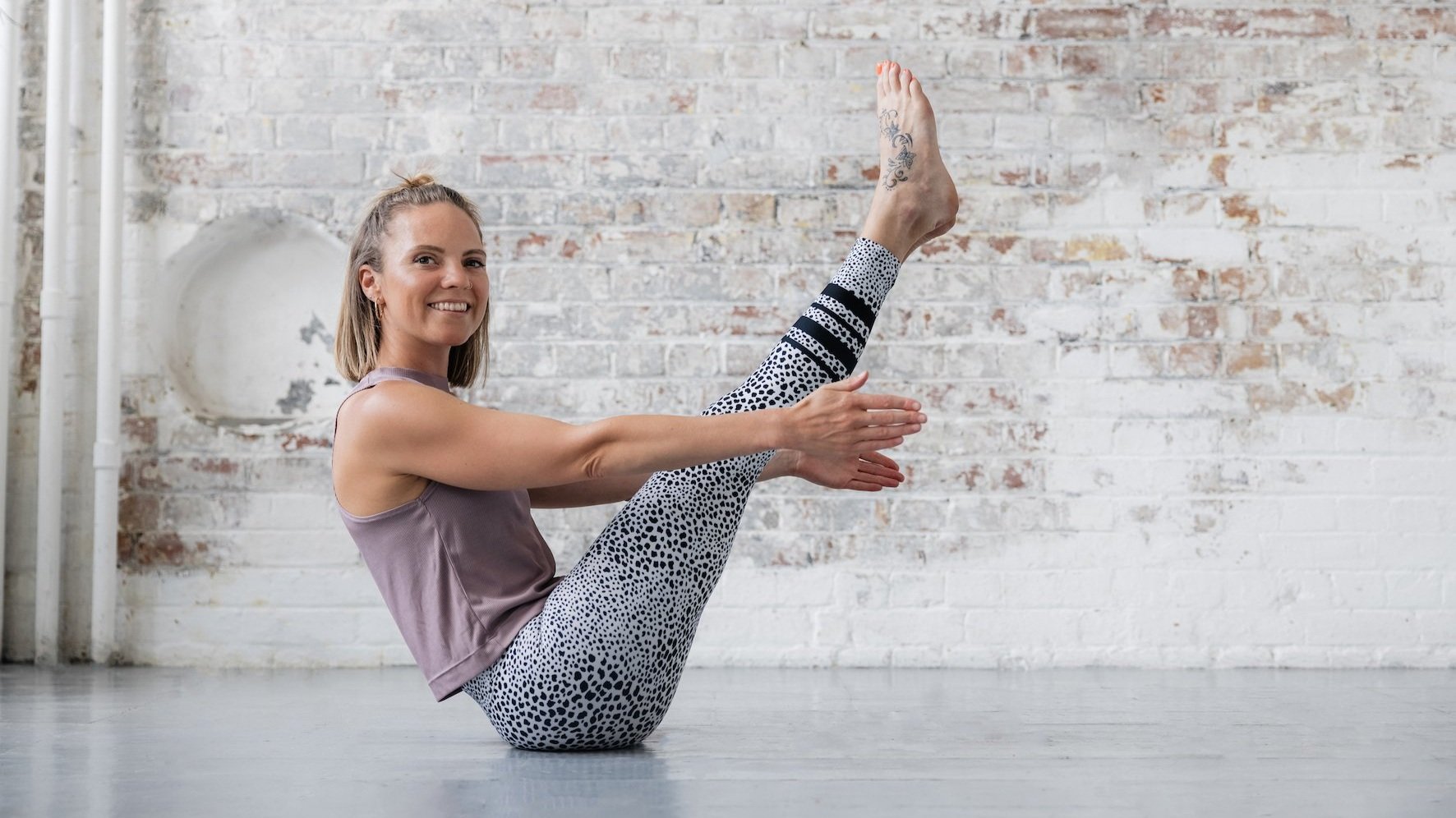Top tips to bring comfort and ease to your Nāvāsana
Top tips to bring comfort and ease to your Nāvāsana
Nāvāsana, or the boat pose, is possibly the most unpopular āsana in the primary series..... It often gets rushed in Mysore practice and is dreaded in a led class. I have to admit, in the past, I’ve been guilty of skipping the odd nāvāsana when I thought my teacher wasn’t looking. (Just to let you know we do notice)
This post aims to shed some light on nāvāsana, and why it’s important, will help shift your perspective and you’ll come to appreciate and maybe even enjoy it.......
Fun Fact 1 - Nāvāsana helps build abdominal strength
Nāvāsana comes at the mid-point in the primary series, as we reach the series pinnacle and the most challenging postures. By this point we’re able to access the deep hip opening, spinal flexion, hamstring flexibility, and shoulder rotation required for earlier postures; but to properly prepare for what’s to come, in particular kūrmāsana and kūrmāsana, we need sufficient abdominal strength. This is where nāvāsana comes in.
Practising Nāvāsana
The main action of the nāvāsana is hip flexion. It’s the hip flexors that are responsible for that aching pain you feel in your hip creases when you’re in nāvāsana.
Nāvāsana is entered on the inhalation from downward dog (seventh vinyāsā).
Jump through and lean back on your sitting bones and raise your legs so your feet are at eye level and your toes are pointed.
Hold your arms parallel at shoulder height, drawing them back into your shoulder joints with your palms facing each other.
Lift your chest so as not to collapse your lower back and create a sinking boat.
The dṛṣṭi is nāsāgre, or the tip of your nose.
To hold your legs and the pelvis in place, and prevent your spine and chest from collapsing, sufficient abdominal and lower back strength is required. This is where using your bandhas provide essential support and protection for your lower back.
Nāvāsana Top Tip 1 - Think about engaging moola bandha and drawing your belly button in and up towards your spine while softening and releasing your hip flexors
Avoid a sinking boat
While you’re building strength, to avoid sinking your boat you can try practising nāvāsana with your knees bent. With your feet on the floor and your knees bent lean back onto your sitting bones and gradually try to lift your feet off the floor whilst maintaining a straight back and lifting your chest. Hold your arms in the position described above. If you feel yourself start to sink into your lower back, bring your hands behind your knees and use this action to draw yourself up out of your lower back keeping your chest lifted. If it feels more comfortable you can also experiment with keeping your knees wider apart.
Fun Fact 2 - Nāvāsana can help perfect your jump backs
Nāvāsana is repeated five times. Between each repetition on the inhale (eighth vinyāsā) is the dreaded lift up. Here we cross our feet at the ankles, ideally without letting them touch the floor. We draw our knees into the chest whilst placing our palms flat on the floor next to our hips. From here still inhaling we lift off the floor. This is a great way to prepare for jump backs as the action of drawing your knees into your chest rounding your spine and lifting is exactly what’s needed for the “lift up” part of the jump back. Don’t worry if it feels like you're filled with lead and you’ll never lift off. Do your best; try to lift up and one day you’ll get there. If your feet stay on the floor and you don’t lift up keep trying. Remember placing your hands behind you or lifting up on your fingertips is cheating. As well as giving the false illusion of a lift it puts a lot of strain on your fingers.
Nāvāsana Top Tip 2 - If you have shorter arms and/or a long torso you may need to adjust the position of your hands to get them flat on the floor.
The lift is finished on the exhale as you come back to the floor.
Fun Fact 3 – Nāvāsana may improve your digestion
As well as building strength, bandha control, and assisting with your jump back technique, nāvāsana also promotes agni – the digestive fire. Strong agni improves digestion and elimination of waste, so five full power nāvāsanas may also help process that after practice treat!
Nāvāsana Top Tip 3 - Find balance and ease
By the fifth repetition, often we begin to struggle. Boats start to sink; the strain is showing as faces scrunch up and breath control goes out the window. If this happens, it’s much better to practice nāvāsana with knees bent rather than lose your breath, struggle through, and potentially injure yourself. Remember “sthira sukham āsanam” (Yoga Sutras 2.46). Asana should be performed with comfort and ease. Find the balance whereby you’re challenging yourself but still practising the āsana safely and maintaining steady breath. If your face is scrunched up and you’re frowning your won’t be sending positive messages to your nervous system.


